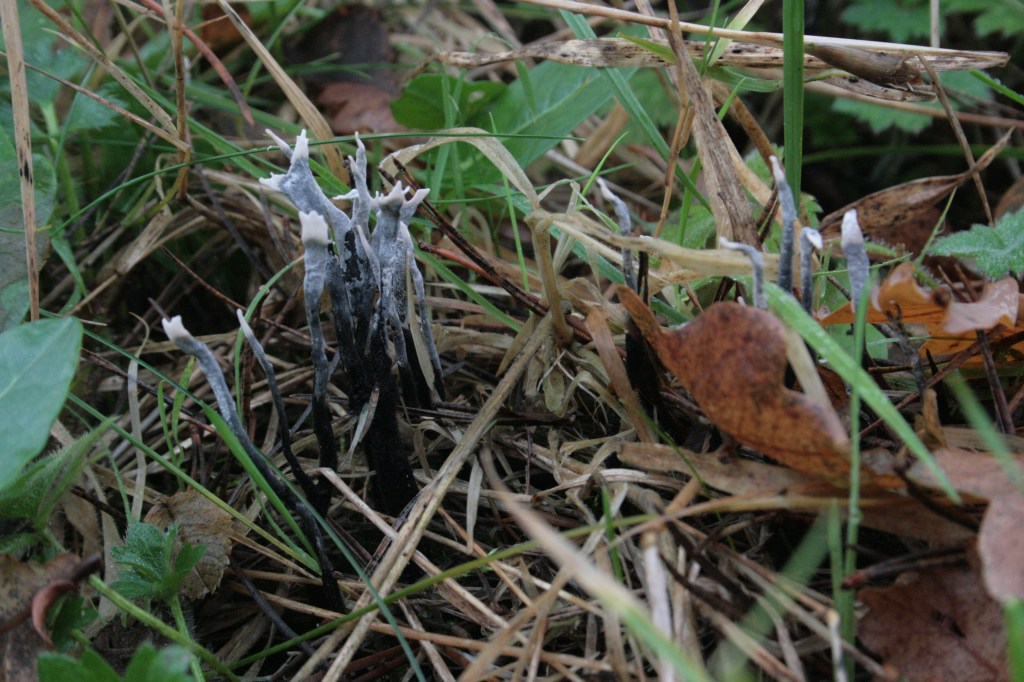
This little cluster of Xylaria hypoxylon, standing between 4 – 6cm high, nestled between the undergrowth amidst blades of green grass, brown dried grass and creeping buttercups, is one of my favourite finds. Standing proud with it’s distinct features, these figures poetically appeared when I was throwing out the ash from the woodburning stove during a house-sitting/Wwoofing stay in rural Northern Ireland, at a friend’s smallholding.
It’s common name of candlesnuff fungus describes this treasure perfectly, it really does resemble little burned wicks. The tips are white with uneven edges, and the slender ‘stems’ (stroma) wiggle their way upright for attention, they are are quite flat and branch at the top like little antlers. In the example above, the dark black of the base is in sharp contrast to the tip, the tip gives the impression of being pure white. The grey white-noise like tone between the pure black and pure white is created by the asexual spores which are crucial for its reproduction. Due to the life cycle of the fungus and its fruiting body (as with most fungus), the fruiting body can appear differently at different stages for example, the entirety of the fruiting body will eventually blacken as spores ripen. This happening usually in winter.
They normally grow in the fallen dead wood of broad-leaved trees and can be be found year round in Britain and Ireland. It is widespread and common, but is uncommon around conifers.

On the Cate 2 database, managed and maintained by The Fungus Conservation Trust, there are currently 14,012 records in the UK and Northern Ireland dating from 31/12/1904 – 20/03/2021, with most recorded in England.
Basic Profile
Scientific name: Xylaria hypoxylon
Common names: Candlesnuff fungus; Stag’s Horn Fungus
Size of fruiting body: 3-6cm tall, 2-5mm wide
Spores: bean shaped 11-15 x 4-6µm
Gills: None
Edibility: According to First Nature.com – no distinctive taste, Patrick Harding notes it is tough and inedible
Lookalikes: Xylaria carophyla grows on rotting beech and is much thinner
On the Red Data List (extinct/critically endangered/endangered/vulnerable/near threatened): No
References:
Cate2 Database, managed and maintained by The Fungus Conservation Trust
Red Data List, British Mycological Society
Collins Complete Guide to British Mushrooms & Toadstools, Paul Sterry & Barry Hughes, 2009
Mushrooms and Toadstools of Britain and Europe, Edmund Garnweidner, 1994
Mushrooms, Patrick Hardy, 2013


Really interesting! I’ll keep my eyes peeled for candlesnuffs on my next walk 😀
LikeLiked by 1 person